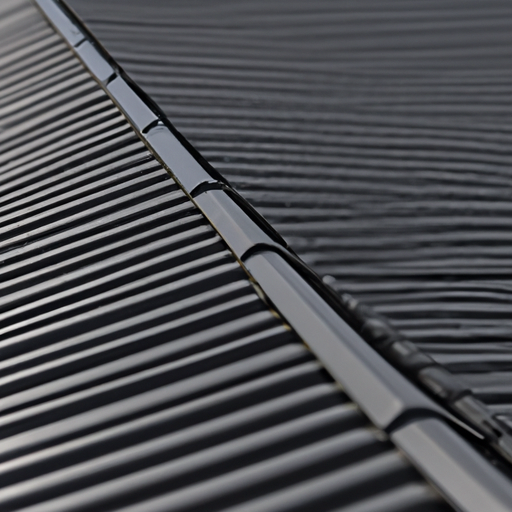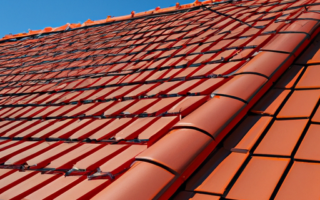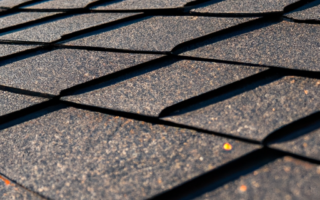Pros and Cons of Metal Roofing Materials: Exploring their Advantages and Disadvantages
Exploring the advantages and disadvantages of metal roofing materials is essential for homeowners considering this option. Metal roofs have gained popularity in recent years due to their durability, energy efficiency, and aesthetic appeal. However, like any other roofing material, they also have their pros and cons. Let’s delve deeper into them.
Advantages of Metal Roofing Materials
1. Durability: Metal roofs are highly durable and can withstand extreme weather conditions such as high winds, heavy rain, and snow. They are resistant to fire, rot, and insect damage, making them an excellent long-term investment.
2. Longevity: Metal roofs have a longer lifespan compared to other roofing materials. Most metal roofs can last for 40 to 70 years, depending on the type of metal used.
3. Energy Efficiency: Metal roofs are reflective, meaning they can reflect the sun’s heat away from the house. This helps to keep the interior cool during hot summer months, reducing the need for air conditioning. It also contributes to energy savings and lower utility bills.
4. Environmental Friendliness: Metal roofs are often made from recycled materials and are themselves recyclable. This makes them an environmentally friendly option for homeowners concerned about sustainability.
5. Versatility: Metal roofing materials come in various styles, colors, and finishes, allowing homeowners to choose a design that matches their aesthetic preferences. Additionally, some metal roofs can mimic the appearance of other materials, such as tiles or shingles, providing a more traditional look.
Disadvantages of Metal Roofing Materials
1. Higher Initial Cost: Metal roofs generally have a higher upfront cost compared to other roofing materials. However, considering their longevity and durability, they tend to be a cost-effective choice in the long run.
2. Noise: Rain, hail, and other external noises can be amplified on a metal roof, creating a potentially noisy environment during storms. However, some metal roofing options come with noise-reducing features to mitigate this issue.
3. Denting: While metal roofs are generally resistant to damage, they can be prone to denting from heavy objects such as falling branches or hail. However, proper installation and regular maintenance can help minimize this risk.
4. Expansion and Contraction: Metal roofs can expand and contract with temperature variations. This may lead to the loosening of fasteners over time, requiring periodic inspections and maintenance.
In conclusion, exploring the advantages and disadvantages of metal roofing materials is crucial for homeowners. While metal roofs offer significant benefits in terms of durability, longevity, energy efficiency, and versatility, they also come with potential drawbacks such as higher upfront costs, noise, denting, and expansion/contraction issues. Considering these factors, homeowners can make an informed decision on whether metal roofing is the right choice for their homes.
A Comprehensive Look at Metal Roofing Materials: Benefits and Drawbacks Revealed
When it comes to roofing materials, metal has become increasingly popular in recent years. Its durability, energy efficiency, and sleek appearance have made it a top choice for both residential and commercial buildings. However, like any roofing material, metal has its own set of advantages and disadvantages that should be carefully considered before making a decision.
Advantages of Metal Roofing Materials
One of the major advantages of metal roofing materials is their longevity. Unlike traditional asphalt shingles that may need to be replaced every 10-20 years, metal roofs can last anywhere from 40 to 70 years, depending on the type of metal used. This long lifespan translates to significant cost savings in the long run.
Another benefit is the strength and durability of metal. Metal roofs are highly resistant to extreme weather conditions, including heavy rain, strong winds, and even hail. They are also fire-resistant, which can provide added peace of mind for homeowners.
Energy efficiency is another key advantage of metal roofing materials. Metal roofs reflect solar radiant heat, reducing cooling costs in the summer. They can also be coated with special reflective paint to further enhance their energy-saving properties. Additionally, metal roofs are often made from recycled materials and can be fully recycled at the end of their lifespan, making them an environmentally-friendly choice.
Disadvantages of Metal Roofing Materials
One of the main drawbacks of metal roofs is their initial cost. Metal roofing materials tend to be more expensive than traditional shingles. However, when considering the long lifespan and energy-saving features, the initial investment can often be offset by the long-term benefits.
Another disadvantage is the potential for noise. Some homeowners may find that rain or hail hitting a metal roof creates a louder noise compared to other materials. However, this can be mitigated by using insulation during the installation process.
Additionally, metal roofs can be more difficult to install than other roofing materials, requiring specialized knowledge and skills. It is important to hire a professional roofing contractor experienced in working with metal to ensure a proper installation.
Conclusion
Metal roofing materials offer a range of benefits, including durability, energy efficiency, and longevity. However, they also come with certain drawbacks, such as a higher initial cost and potential for noise. By carefully weighing the advantages and disadvantages, homeowners can make an informed decision about whether metal roofing materials are the right choice for their specific needs and budget.



